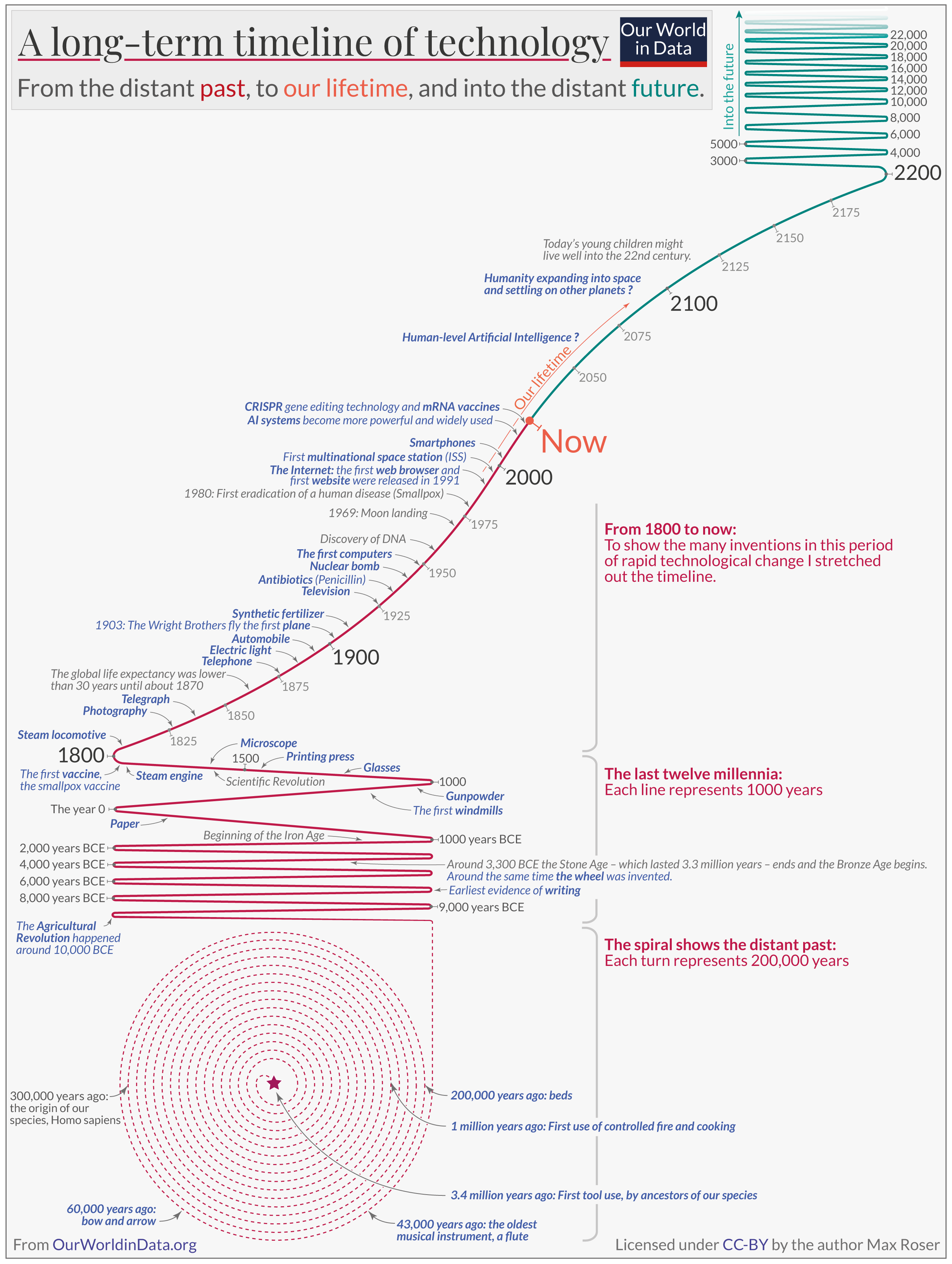Article by Max Roser: “The big visualization offers a long-term perspective on the history of technology.
The timeline begins at the center of the spiral. The first use of stone tools, 3.4 million years ago, marks the beginning of this history of technology. Each turn of the spiral then represents 200,000 years of history. It took 2.4 million years – 12 turns of the spiral – for our ancestors to control fire and use it for cooking.3
To be able to visualize the inventions in the more recent past – the last 12,000 years – I had to unroll the spiral. I needed more space to be able to show when agriculture, writing, and the wheel were invented. During this period, technological change was faster, but it was still relatively slow: several thousand years passed between each of these three inventions.
From 1800 onwards, I stretched out the timeline even further to show the many major inventions that rapidly followed one after the other.
The long-term perspective that this chart provides makes it clear just how unusually fast technological change is in our time.
You can use this visualization to see how technology developed in particular domains. Follow, for example, the history of communication: from writing, to paper, to the printing press, to the telegraph, the telephone, the radio, all the way to the Internet and smartphones.
Or follow the rapid development of human flight. In 1903, the Wright brothers took the first flight in human history (they were in the air for less than a minute), and just 66 years later, we landed on the moon. Many people saw both within their lifetimes: the first plane and the moon landing.
This large visualization also highlights the wide range of technology’s impact on our lives. It includes extraordinarily beneficial innovations, such as the vaccine that allowed humanity to eradicate smallpox, and it includes terrible innovations, like the nuclear bombs that endanger the lives of all of us.
What will the next decades bring?
The red timeline reaches up to the present and then continues in green into the future. Many children born today, even without any further increases in life expectancy, will live well into the 22nd century.
New vaccines, progress in clean, low-carbon energy, better cancer treatments – a range of future innovations could very much improve our living conditions and the environment around us. But, as I argue in a series of articles, there is one technology that could even more profoundly change our world: artificial intelligence (AI).
One reason why artificial intelligence is such an important innovation is that intelligence is the main driver of innovation itself. This fast-paced technological change could speed up even more if it’s not only driven by humanity’s intelligence, but artificial intelligence too. If this happens, the change that is currently stretched out over the course of decades might happen within very brief time spans of just a year. Possibly even faster.
I think AI technology could have a fundamentally transformative impact on our world. In many ways, it is already changing our world, as I documented in this companion article. As this technology is becoming more capable in the years and decades to come, it can give immense power to those who control it (and it poses the risk that it could escape our control entirely).
Such systems might seem hard to imagine today, but AI technology is advancing very fast. Many AI experts believe there is a real chance that human-level artificial intelligence will be developed within the next decades, as I documented in this article….(More)”.

